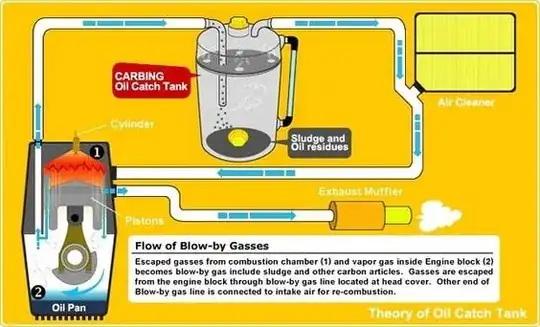I was reading a blog by an autocross racer and he lost an engine due to a block crack, which apparently was caused by broken ring lands. In the blog he says that the problem could have been avoided by having a "catch can". What is that?
1 Answers
A catch can is a device which sits in the path between the PCV valve and the intake. It's job is to catch any liquids coming out of the crankcase and give them a place to settle so they don't get into the intake tract. Many people use them on Direct Injected (DI) engines. Without them, a lot of the oil/gunk gets deposited on the back of the intake valves. With port injected engines, the fuel injectors spray the back side of the valve and help keep them clean.
The following is a diagram of how a catch can works (pulled from Autodesk Instructables):
As for the claim of the catch can preventing ring land damage, I'd suggest it's highly unlikely. The author of the thread stated they do road racing in their Lotus and the hard lateral G's causes oil to get into the PCV and then into the cylinder which causes the ring lands to fail. The only way this could happen is if there was enough oil present to cause hydrolock, which could potentially cause ring land damage, however there are two issues. First, the amount of oil it'd take to cause hydrolock would have left evidence, which from the writ doesn't look possible. Second, a hydrolock situation would have caused greater damage ... a lot more than just busting ring lands on one piston.
After reading the thread, it is my opinion the ring lands failed on their own. If there was an issue a catch can could have solved here, there would most likely be damage to all or at least more than one piston. This is not to say a catch can wouldn't have other benefits, it's just it wouldn't have prevented a ring land failure.
The other thing of note is, if there is that much oil escaping through the PCV system, either more/better baffling around the PCV valve is needed or it should be located to a better position where less oil could be picked up.
- 165,084
- 32
- 259
- 508
